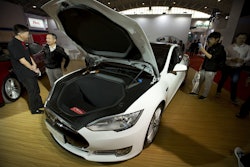One Piece Peace of Mind
The benefits of conveyor systems
ensure the integrity of delicate food
products, increase safety and enhance
energy efficiency.
Sponsored by:Produced by:
A closer look at systems
that move materials gently
while maximizing yield and
minimizing costs.
2For food processors who produce and work with delicate products –
think breakfast cereals, whole coffee beans and various types of nuts
to name a few – keeping those valuable commodities in one piece is
a top priority.
That requires moving products as gently as possible along the
conveyor line during the production process in order to prevent
breakage. When that is achieved, companies are able to both
maximize yield and minimize costs, resulting in a significant victory
for both the end consumer and the company’s bottom line.
Pecans, which are often displayed in
Trader Joe’s, are a good example. The
pecan halves command twice the price
of the broken pieces. Clearly, when a
conveyor breaks a nut, 50% of its value
is lost. There are anecdotes of nut plants
upgrading to tubular drag conveyors
and realizing a $1,000 per day yield
increase!
Cablevey – Tubular Drag Cable Conveyor
One Piece Peace of Mind
The benefits of conveyor systems ensure the
integrity of delicate food products, increase
safety and enhance energy efficiency.
3Flat-belt conveyors, bucket elevators, pneumatic conveyors, auger
conveyors, aeromechanical conveyors and tubular drag conveyors
are all popular options for moving delicate food product. Tubular
drag conveyors, though, have proven to be especially effective for
transporting these delicate materials through the various stages of
food production. Tubular drag systems can provide higher through-
put (up to 45,000 pounds per hour, according to Cablevey Conveyors),
increased safety and potential energy savings.
After years of testing various conveyors, the biggest breakfast cereal,
whole bean coffee, almond, pistachio and peanut processors in the
world have replaced legacy systems with the gentler enclosed tube,
cable and disc conveyors.
Recent research conducted by Food Manufacturing provides some
perspective on the use and scope of conveying systems in the food
manufacturing industry. Food Manufacturing surveyed its reader-
ship about conveyor use in their respective facilities. Results from
this survey offer insights on the types of conveyors used, the types
of products those conveyor systems move, satisfaction levels with
existing conveyor systems and more.
Survey respondents were plant operations personnel at food manu-
facturing facilities throughout the United States. Of those surveyed,
more than two-thirds (67%) indicated
their facilities currently use conveyor
systems to handle food products.
Cablevey – Tubular Drag Cable Conveyor
4Conveyor Type, Product Type: When it comes to the
specific types of conveyors used at their respective
facilities, survey respondents mentioned:
• Enclosed Cable or Chain Conveyors (28.7%)
• Bucket Elevators (19.1%)
• Pneumatic (19.1%)
• Screw Augers (17.4%
• Aeromechanical (15.7%)
As for the types of products their conveyor
systems move, more than half of survey respon-
dents (54%) indicated food products (includ-
ing nuts, coffee, cereal, etc.) Other categories
mentioned included: Specialty products (28.3%),
powders (28.3%), flakes (8.8%) and pellets (7.9%).
Keeping the Product in One Piece
The vast majority of those surveyed indicated that minimizing
product breakage is a significant priority.
• 74.2% of respondents indicated minimizing
product breakage was important.
• 8.6% said minimizing product breakage
was not important.
• 17.2% indicated product breakage was not
a concern.
Q4
Q2
Q6
Q9
15.7%
28.7%
19.1%19.1%
17.4%
0 10 20 30 40 50 60 70 80
17.2%
8.6%
74.2%
5Concerning Safety
Dust, heat and explosions were all cited as safety concerns for the
survey respondents: More than 78% cited dust as a chief safety con-
cern, and more than 52% indicated heat was a significant concern.
More than 31% said explosions were a safety concern.
Timothy Cox PE, R&D Engineer at Cablevey, said, “Enclosed tube
cable and disc conveyors inherently detain dusts so they are not
released into the plant.”
We asked survey respondents about their level of
satisfaction with their existing conveyor systems:
• 62.2% indicated they were satisfied with
the current conveyor system in their facility.
• 25.8% indicated they were very satisfied
with existing systems.
• 10.3% said they were not satisfied with the
current conveyor system in their facility.
• 1.7% said their facility’s conveyor system
was due for an upgrade.
How old is your conveyor system?
More than 30% of those surveyed said their facility’s conveyor system
had been installed 4-6 years ago. A quarter (25.2% of respondents
indicated their conveyor system was installed more than 10 years
ago. Slightly more than 20% reported their conveyor system
installation took place between 7-10 years ago. Nearly 14% said their
facility’s conveyor system was installed in the last 1-3 years, with
9.5% reporting it has been less than a year since a conveyor system
was installed at their facility.
A new system on the way? More than 34% of those surveyed indi-
cated that their company was looking install a new conveyor system
or overhaul existing systems within the next 1-2 years.
0 10 20 30 40 50 60 70 80
62.2%
25.8%
10.3%
1.7%
6Our Conveyor System Operating Costs Are...
• More than 56% of those surveyed said
their conveyor system operating costs are
about what they would expect.
• More than 16% said their conveyor system
operating cost is higher than they would
expect.
• Slightly more than 5% said conveyor oper-
ating costs were considerably higher than
they would expect.
• Slightly less than 7% said conveyor oper-
ating costs were lower than they would
expect.
• Only 2.5% of respondents indicated that conveyor operating
costs were considerably lower than they would expect.
The majority would like to lower operating costs by increasing energy
efficiency/lowering energy consumption. More than half of those
surveyed (54.7%) would like to decrease operating costs and im-
prove energy efficiency. Just more than 38% said reducing operating
costs was not a concern at their facility.
0 10 20 30 40 50 60
7%
2.5%
5%
16%
56%
7About This Report
The information presented in this report was researched and
produced by Food Manufacturing in conjunction with Cablevey
Conveyors. Statistical data was researched and compiled by
Advantage Business Media in April 2016.
About Food Manufacturing
Food Manufacturing (www.foodmanufacturing.com) is a leading
news source covering the food and beverage manufacturing in-
dustry. Food Manufacturing is part of Advantage Business Media’s
Manufacturing Group, with sister properties that include Chem.Info,
Industrial Distribution, Industrial Maintenance & Plant Operations,
Manufacturing.net, Manufacturing Business Technology and
Pharmaceutical Processing.
About Cablevey Conveyors
With more than 40 years of cable and disc technology conveying
experience, Cablevey Conveyors (www.cablevey.com) is a leading
manufacturer of enclosed tubular drag conveying systems. The
company is located in Oskaloosa, Iowa and has installed its systems
worldwide.
One Piece Peace of Mind
For food processors who produce and work with delicate products – think breakfast cereals, whole coffee beans and various types of nuts to name a few – keeping those valuable commodities in one piece is a top priority. That requires moving products as gently as possible along the conveyor line during the production process in order to prevent breakage.
Latest in Home
ABB to Invest $110 Million in 4 U.S. Plants
September 17, 2025
Nvidia CEO Huang Says He's Disappointed by China Chip Curbs
September 17, 2025






















